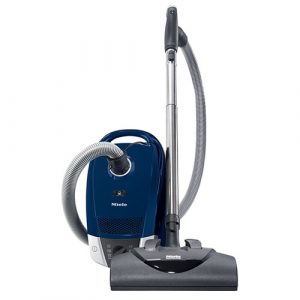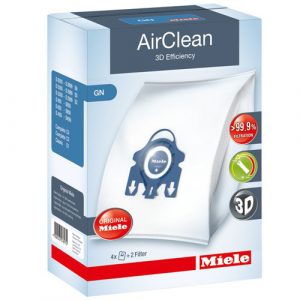HEPA Vacuum Cleaners for Allergies
What makes the best allergy vacuum cleaner?

- HEPA filter – cleans the air expelled air
- Sealed vacuum cleaner – won’t leak dust
- Strong suction – to vacuum up small hard to reach particulates
- Accessory tools – clean in corners and tight places
- Bags – comes with removable bags
- Adaptable – can clean up a variety of messes
Why do allergy sufferers benefit from a high quality HEPA vacuum cleaner?
A vacuum cleaner is the best and most healthy way to clean up dust, dirt, and allergens. By using the onboard tools, you can remove all the dust with a vacuum cleaner from all kinds of surfaces, upholstery, and furniture. In fact, we recommend frequent vacuuming as your first line of allergy defense. The trouble with most vacuum cleaners is that they are not sealed. Even vacuum cleaners that say they include filters, the filters are often pretty poor. What happens when the vacuum runs is allergens go in and come right back out. Which means you end up inhaling all sorts of dust which goes through the machine into the air. In addition, the vacuum cleaner needs to be powerful enough to suck up all the particulates.
How does a vacuum cleaner work?
Most people use a vacuum cleaner on average one hour per week. Incidentally, when vacuum cleaner manufacturers talk about the life of a HEPA filter, they are basing it on one hour of weekly usage. A vacuum cleaner usually works by having a power head attachment to a canister (or integrated power head in an upright). The power head has rotating brushes, which first loosen dust on the carpet and start moving toward the hose. At the same time, the vacuum cleaner contains a strong motorized fan which sucks in the dust and dirt into a special multiplayer filter bag and exhausts the air through a HEPA filter before the air comes back right out again.
How many times do I vacuum a specific area?
What most people do not realize, is in order to get a carpet really clean, you should not just pass the vacuum cleaner once or twice over the target area, but multiple times.
Why do I need a sealed vacuum cleaner?
Most vacuum cleaners are not sealed, unless they tell you they are. If the vacuum cleaner is not completely sealed, or all particulates sucked into a HEPA filter like those in Miele vacuums, then a delightful allergic mixture of dust-mite feces, cat allergen, household dust, pollen fragments, mold spores is blown back into your face. For this reason, many asthma and allergy sufferers are advised to have someone else do the vacuuming for them. For those of us who do not have that luxury, or can’t get their spouse to do the vacuuming, a good HEPA vacuum cleaner is a big help.
Why do I need a vacuum bag?

Vacuum bags are great at keeping dust in. I know that bagless vacuum cleaners have gotten very popular lately, but they are very leaky. When dust goes in, it often come right back out. Interestingly enough just like a bagless vacuum, you should not fill a vacuum cleaner bag completely because as the vacuum cleaner bag fills up there is a lot less suction. Miele vacuum cleaners have a mechanism, which automatically closes the bag completely when you need to change the vacuum cleaner bag. In the newer cyclonic vacuum cleaners, the suction power is not decreased as the collection bin gets full .The problem with cyclonic vacuum cleaners is that they are very awkward to empty for an allergy sufferer who has to endure a completely unsealed container of dust and allergens when they empty the container. So although a cyclonic vacuum cleaner completely eliminates the need for vacuum bags, we do not recommend them for allergy sufferers, unless someone else does the vacuuming for them.
What is HEPA?
The “HEPA” in HEPA filter is an acronym which stands for “High Efficiency Particulate Arresting”. These filters are made out of a media such as fiberglass, bonded together by a synthetic resin and the construction is so tight that almost all the tiny particulates up to .3 microns get trapped permanently in the filter.
HEPA filters were first designed by the Atomic Energy Commission in World War Two for trapping plutonium particles. Since the HEPA media is very dense, HEPA filters need heavy-duty fans to move the air through them. Pollen, one of the largest particulates at 10 microns, is easy to filter. Cat allergen is much smaller. Since there are HEPA filters and “HEPA like” filters you need to be sure that as an allergy sufferer, the filter you are buying will really do the job you want. Miele vacuum cleaners offer a “certified HEPA filter” to assure its customers that they are getting a high efficiency filter.
Some useful links for HEPA vacuum cleaners:
A vacuum cleaner comparison chart between all vacuums on our site
A Miele technical features comparison chart




